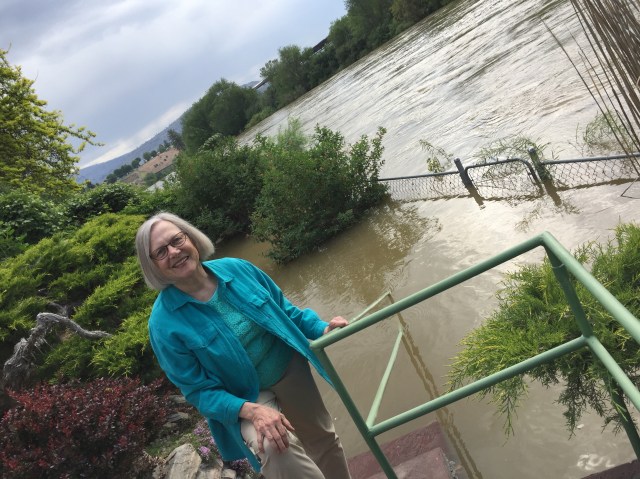
Normally the Okanogan River is the Rodney Dangerfield (“I don’t get no respect”) of Northwest streams. This spring has not been normal—no surprise in this era of new normals. Usually lackadaisical as it flows past my home, the river has pushed hard against its banks with a force that’s been hypnotic to watch.
For much of its 115 miles, the Okanogan has an identity crisis. It begins as a series of lakes and can’t even get its name spelled consistently. Its source, in Canada where they love their “Ays,” is spelled Okanagan Lake. It doesn’t begin to take shape as a river until it crosses the border, replaces an a with an o, and is joined by its primary tributary: the Similkameen. The beautiful, tumbling Similkameen is longer by seven miles and fed by snowpacks in Canada’s mountains. This year’s snowpack was 200 percent above normal.
In the early 1900s, the Okanogan was a life line for the small frontier towns that situated themselves next to it. At high water, stern wheelers would transport goods, passengers, and the first fruits of a brand new apple industry. Then the railroad came, followed by highways, and our towns have pretty much turned their backs on the river. Except for people who fish, occasional rafters and tubers on hot summer days, and farmers who have water rights to irrigate, the river is ignored.
Then we get a spring like this one. Throughout May, everywhere you went—grocery store, post office, gas station—everyone was talking about the river. I attended the county emergency services meeting, where we heard that in seven days we’d have the third highest crest in recorded history. Two days later it did crest, the third highest crest on record but nearly two feet lower than originally forecast. When you’ve got water creeping ever closer to your home, a mere two feet can give you space to breathe.
I wasn’t worried about my home. Neither it nor the house next door where I lived for thirty years has ever flooded. Not in 1972, the worst flood on record, nor in 1948, the second worst.
A number of homes and businesses were impacted—usually not from the river spilling over its banks or topping levees, but from the surrounding water table seeping upward. The home of my friend Rochelle Riling—an educator, artist, farmer and wise woman—was threatened. She described the feeling: “We were standing on a river that was rising up through the earth right under our feet, and you could feel it, especially when you tried to sleep on it, and it was intense. But that’s what life does, yes? Rise up under our feet and force us to rise up with it and figure out how to handle wherever it takes us.”
Her home escaped and the river has receded to normal run-off levels, leaving behind a mess of mud and sand. As Rochelle advises, we’re figuring out how to handle it.
